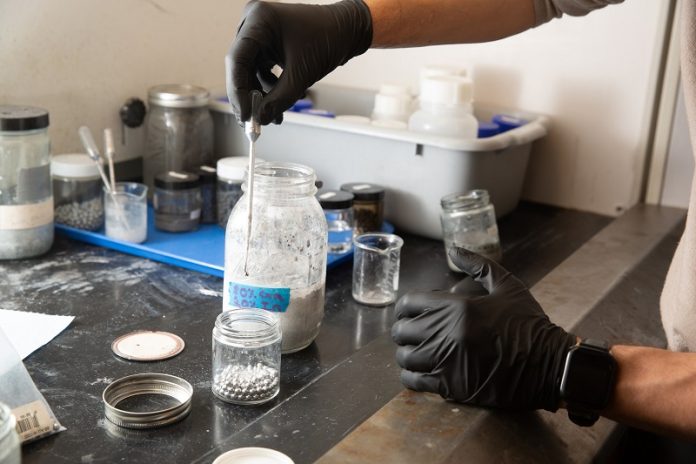
MIT engineers have found an exciting new way to produce clean energy using old soda cans, seawater, and a bit of caffeine.
This innovative method could provide a sustainable source of hydrogen fuel, which can power engines without creating harmful emissions.
The research, published in the journal Cell Reports Physical Science, shows that pure aluminum from soda cans can produce hydrogen gas when mixed with seawater.
Hydrogen is a clean fuel that, when used in engines or fuel cells, doesn’t release carbon emissions.
The process can be made even faster by adding caffeine, a common stimulant found in coffee.
The engineers used pretreated aluminum pellets, about the size of pebbles, which they dropped into filtered seawater.
The aluminum was treated with a rare-metal alloy that removes any impurities, allowing it to react with seawater and produce hydrogen gas. The seawater’s salt ions help recover the alloy, making the process sustainable.
Normally, this reaction is slow. However, the team discovered that adding a small amount of imidazole, a component of caffeine, speeds up the reaction significantly.
This means hydrogen gas can be produced in just five minutes instead of two hours.
The researchers are developing a small reactor that could be used on boats or underwater vehicles.
This reactor would use recycled aluminum pellets, gallium-indium alloy, and caffeine. The idea is to add these ingredients and seawater to the reactor, which then produces hydrogen on demand. This hydrogen can power the vessel’s engine or generate electricity.
“This method is very useful for maritime applications because seawater is readily available,” says Aly Kombargi, the study’s lead author and a Ph.D. student at MIT. “We wouldn’t need to carry tanks of hydrogen. Instead, we would transport aluminum and just add water to produce the hydrogen we need.”
One challenge in using hydrogen as a fuel is its storage. Hydrogen is highly flammable and carrying it in tanks can be dangerous. The MIT team’s solution is to produce hydrogen on demand, eliminating the need to store it.
Aluminum, a stable and abundant material, reacts with water to generate hydrogen and heat. However, aluminum quickly forms an oxide layer when exposed to air, which prevents further reactions.
The engineers solved this problem by treating the aluminum with a gallium-indium alloy, which removes the oxide layer. They found that one pellet of pretreated aluminum can produce 400 milliliters of hydrogen in five minutes. Just 1 gram of these pellets can generate 1.3 liters of hydrogen in the same time.
To make this process cost-effective and sustainable, the team found a way to recover and reuse the gallium-indium alloy using ions in seawater. They tested this with seawater from a nearby beach and it worked perfectly.
The researchers are now focusing on scaling up this technology for use in trucks, trains, and possibly airplanes. They are also exploring the idea of extracting water from the air’s humidity to produce hydrogen, which could be a game-changer for land-based vehicles.
“We’re showing a new way to produce hydrogen fuel without carrying hydrogen, but by using aluminum as the fuel,” Kombargi says. “Our next step is to figure out how to use this for larger vehicles and make it practical for everyday use.”
This breakthrough could pave the way for a cleaner, more sustainable future where soda cans and seawater play a key role in powering our world.
Source: MIT.



